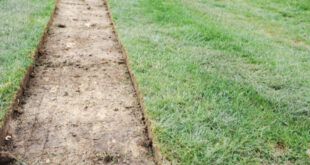Nevada and California joined forces last week at the 24th annual Lake Tahoe Summit to advance the states’ shared priorities to protect and restore Lake Tahoe. The combined pressures of climate change, population growth, and increased visitation have severely strained the Tahoe basin’s transportation infrastructure system, undermining the health of the Lake and surrounding forests, and impacting the overall visitor experience at trailheads and beaches throughout the Lake during all times of the year.
There is a long history of collaboration between Nevada and California to restore and protect Lake Tahoe and its surrounding environment. A critical underpinning to achieving resiliency for Lake Tahoe is the advancement of locally-based scientific research to help inform the policy actions necessary to protect the health of the Lake and its surrounding forest ecosystem.
As such, during its annual meeting, the Lake Tahoe Science Advisory Council (Council) Executive Committee co-chaired by leaders from Nevada and California convened to identify basin-specific science and research needs necessary to preserve and protect the basin through forward-looking, science-driven policy solutions. Through the Council, research institutions in California and Nevada work hand-in-hand with land managers, residents and stakeholders to address current and emerging challenges head-on, ensuring key policies and management decisions on both sides of the lake are grounded in the best available science.
As part of its “science-action” partnership approach, the Council Executive Committee convened on Friday to discuss new developments, program updates, and the most recent work plans to help guide future policies in the Lake Tahoe basin. Highlights from the meeting include:
- Sustainable recreation and transportation – The Council will be conducting research regarding travel patterns within the basin, as well as new research regarding recreational conditions. The work will be used to inform an integrated transportation system to meet the unique needs of the basin and to develop appropriate metrics to inform recreational management decisions in the face of increasing recreational pressures.
- Lake Clarity – Overall lake clarity has stabilized and is improving slightly during the winter months, but is declining more rapidly during the summer months. The Council completed research to determine the reasons for the differences in summer and winter clarity to help shape future policy and project decisions regarding stormwater and watershed management.
- Development of an “Upland Ecosystem Science to Action Plan” – The Council is working with key basin stakeholders to better understand the linkages between land and water-based ecosystems, biological diversity, and the impacts of climate change on overall health of the lake and the surrounding forest ecosystem.
The work of the Council supports the priority areas outlined by the leadership of the Nevada and California Natural Resource Agencies at the Tahoe Summit. These priority areas are 1) Climate Change Adaptation and Resilience; 2) Transportation; 3) Sustainable Recreation and Equitable Public Access; and 4) Science Informing Policy and Management.
“Lake Tahoe is one of the most beautiful and unique natural landscapes in the world,” said Bradley Crowell, Director of the Nevada Department of Conservation and Natural Resources. “Together, with our partners on both sides of the lake, we remain steadfast in our commitment to protect Lake Tahoe for all visitors and residents to enjoy for generations to come. While the impacts of climate change can already be seen and felt throughout the basin, it is not too late to protect and restore the ecological health and natural beauty of the lake. Through the newly established Nevada Climate Initiative, we will help elevate Nevada’s commitment to collaboration and innovation to ensure a vibrant, sustainable, climate-resilient future for Lake Tahoe and beyond.”
“Lake Tahoe is facing new challenges,” said Wade Crowfoot, Secretary of the California Natural Resources Agency. “The strong partnership between resource managers and the Council offers a unique opportunity to guide policy with targeted research and monitoring. Using science, the Lake Tahoe region can continue to demonstrate how we can respond to changing conditions, restore our watersheds, and ensure Lake Tahoe remains the jewel of the Sierra. Like Nevada, the State of California is steadfast in its commitment to ongoing collaboration to protect this precious resource.”
The bi-state Tahoe Regional Planning Agency (TRPA), representing the 50-year-old partnership between Nevada and California, is tasked with uniting the best available science with collaborative policy-making to implement new protections for Tahoe’s sensitive ecosystem in the face of today’s challenges.
“The bi-state compact has endured for 50 years with best science at the root of Lake Tahoe’s protection,” TRPA Executive Director Joanne S. Marchetta said. “With sound science to inform policy and management, we will surmount ongoing challenges and guide Lake Tahoe toward greater resilience against the emerging threats of climate change, recreation and visitation pressures, and wildfire risk.”
 California Water News Daily Your Source For Water News in California
California Water News Daily Your Source For Water News in California


